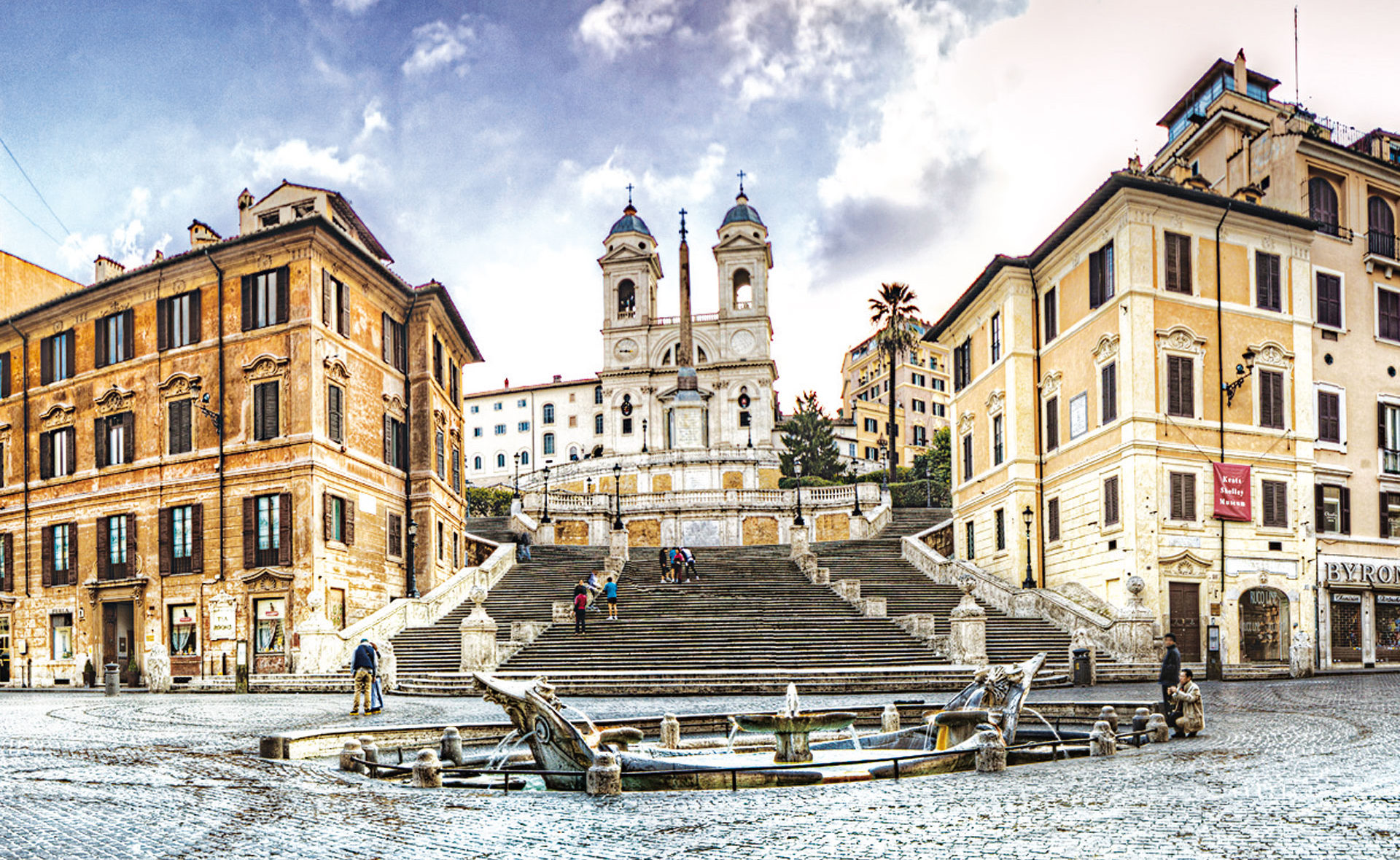Situated at the foot of the Pincian Hill, Piazza di Spagna is a splendid eighteenth-century square surrounded by ochre-coloured buildings, luxury shops, important house-museums and old cafès.

Among the most evocative squares in Rome, Piazza di Spagna owes its name to the Palazzo di Spagna, seat of the Embassy of Spain to the Holy See.
Seen from above, the square has an unusual butterfly plan formed by two triangles with a single common vertex. At the centre is the Barcaccia, “Fountain of the Ugly Boat”. It is one of the most original fountains of the city and was sculpted by Pietro Bernini for Pope Urban VIII to immortalise a boat deposited in the square when the River Tiber flooded in 1598. The apparently derogatory name derives from the “barcacce”, boats used in the nearby port of Ripetta for the transport of wine.
The most distinctive feature in this corner of Rome, however, is the magnificent set of steps designed by Francesco De Sanctis in 1725, with the imposing Trinità dei Monti church at the top. In front of the church stands the Sallustiano Obelisk, a Roman copy,moved here by Pope Pius VI: on clear days, it is a good point from which to see, further out, the obelisk of S. Maria Maggiore on Via Sistina.
Two identical eighteenth-century buildings stand either side of the steps. At number 26, on the right, is the Keats-Shelley House, the last place where the English poet John Keats lived before he died at the age of only twenty-five. This museum is home to one of the most important collections of romantic literature and a large collection of manuscripts and works of art.
Further to the right, towards Via Frattina, stands the imposing column of the Immaculate Conception, designed by the architect Luigi Poletti. On the left of the steps is Babington’s Tea Room, the venue that best popularised the drinking of tea in Rome.
From Piazza di Spagna leads the luxurious Via dei Condotti, on what was formerly known in the sixteenth century as “Via Trinitatis”. Here, at number 86, is Antico Caffè Greco, the second oldest café in Italy after the Florian in Venice. Founded in 1760 and a meeting place for artists and writers, it is the largest private art gallery open to the public in the world.
Last but not least, is another house-museum, that of Giorgio de Chirico, which can only be visited by appointment. In this seventeenth-century building, where the painter lived for thirty years with his wife, is a large exhibition with everything from self-portraits to the neo-metaphysical works of his later life.
